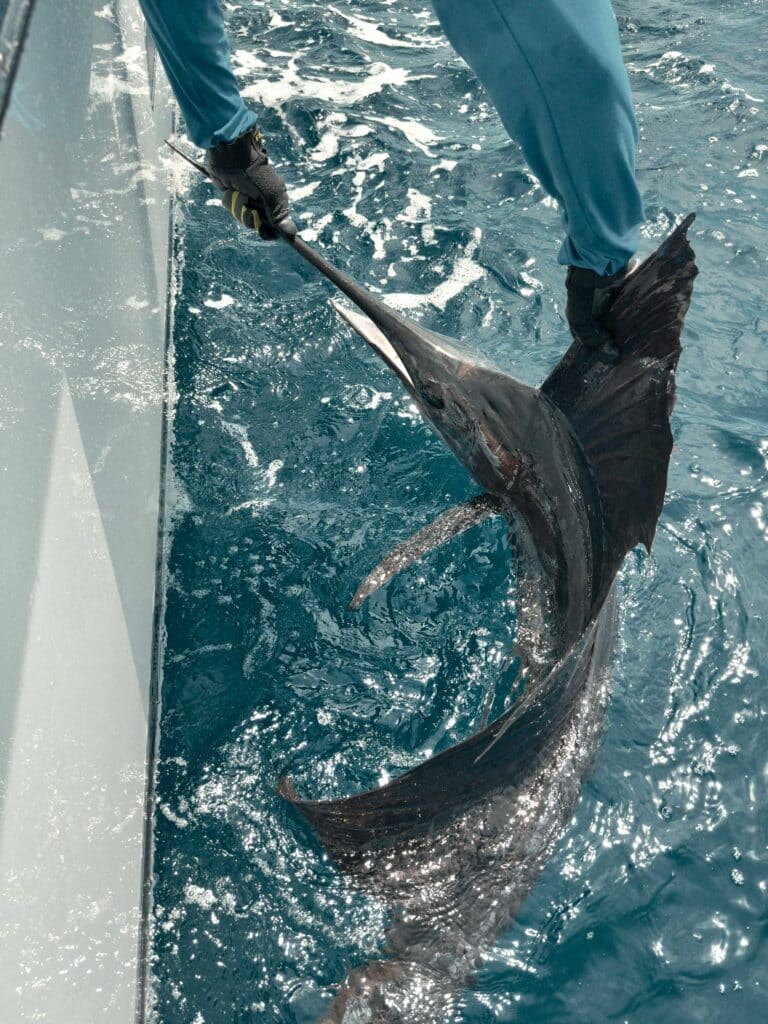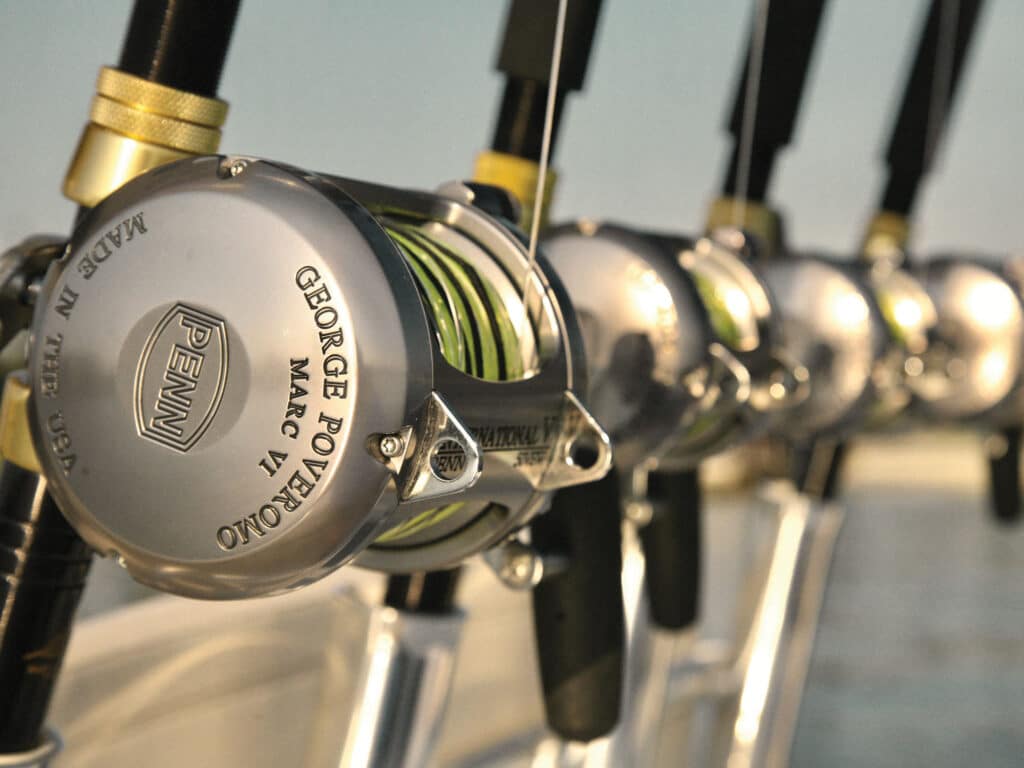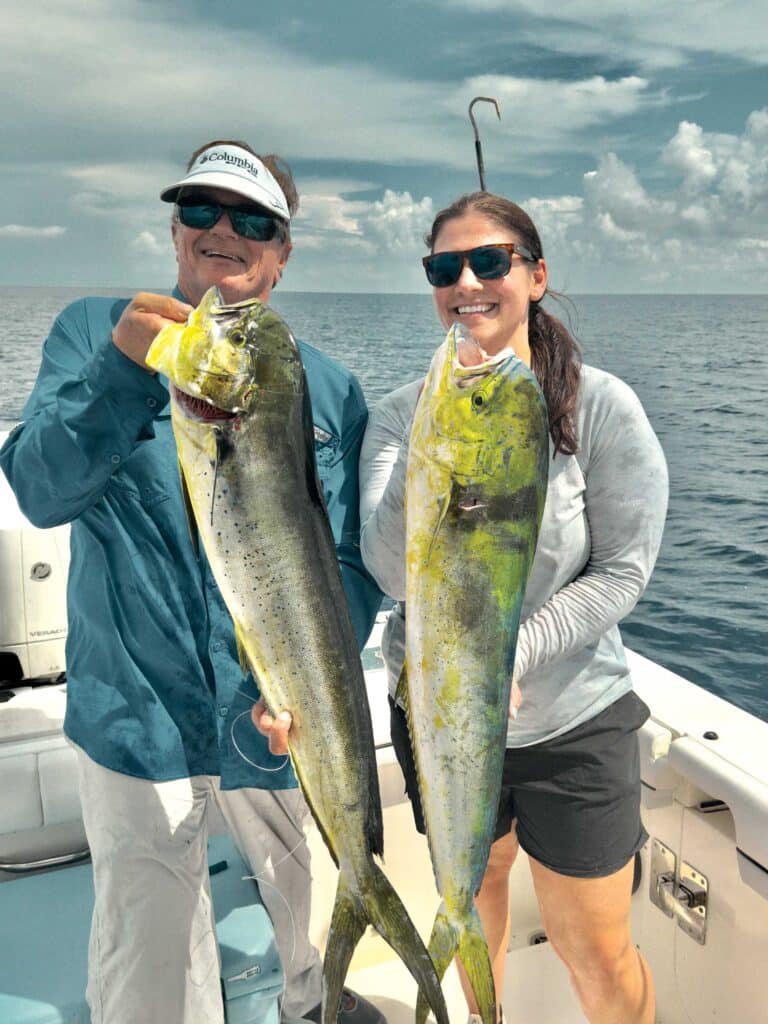SB Television
10 Strategies for Locating and Scoring Offshore Gamefish
 No matter where in the world you’re fishing, there are universal tactics that lead to success.
George Poveromo
No matter where in the world you’re fishing, there are universal tactics that lead to success.
George Poveromo
I’ve spent decades fishing my South Florida home waters, as well as throughout the Bahamas and Florida Keys. I’ve traveled for Salt Water Sportsman and the World of Saltwater Fishing television series. Throughout the years, I’ve formulated 10 crucial strategies that I adhere to for locating and scoring offshore gamefish. The changing ocean and weather conditions certainly dictate some variation. However, using these key tactics—and modifying when warranted—keeps us catching fish. Below are my cornerstones for successful offshore fishing, slanted for trolling.
Rig Well in AdvanceI’m a stickler for rigging all tackle well in advance, be it for trolling, pitch baits or general casting gear. An angler’s job when heading offshore is to study the sonar, radar and ocean for signs leading to fish—not retying lines or rigging baits. Should a situation present itself, have an outfit ready to capitalize on any opportunity.
For trolling, be ready with a minimum of three dozen rigged baits ready to dispatch, as well as lures. Rerigging baits after a blitz or when they’re showing signs of wear is a total waste of productive fishing time, especially when the bite is on.
 Rigging ahead of time allows you to devote full attention to finding fish instead of fiddling with gear.
George Poveromo
Know Where to Go
Rigging ahead of time allows you to devote full attention to finding fish instead of fiddling with gear.
George Poveromo
Know Where to Go
In the South Atlantic, I head toward the shoreward edge of the Gulf Stream, particularly where it flows over pronounced bottom structures. Ditto with fingers from the Stream and eddies that form. This knowledge narrows the search for gamefish. Often marked by a slight (sometimes dramatic, based on the region) water surface-temperature change, such edges become convergence zones where nutrients abound. These nutrients concentrate and feed small fish and squid, and that gathering of life attracts pelagics.
The longer a temperature break, stream or eddy edge remains in place, the more fertile and productive the resulting ecosystem. What’s more, weeds and debris often accumulate along these zones. I consult ROFFS ocean-fishing forecast analyses for such intel and SiriusXM Fish Mapping for plankton fronts.
Time the BiteI consult the solunar tables for each day’s minor and major periods. I make certain I’m not running during these periods, but rather fishing over prime areas. In short, a minor period occurs during the rising and setting of the moon. A major period occurs when the moon is directly overhead or underneath. During these periods, fish tend to feed more aggressively during a span of about 45 to 60 minutes (minor period) to approximately 60 to 90 minutes (major period). There are variables that can throw off the tables, such as inclement weather, fronts and other conditions. Yet, over the long haul, they’ll prove amazingly accurate.
Visual SignsEven with intel on currents, surface-temperature breaks and plankton fronts, anglers must still diligently look for bait—be it deep in the water column or at the surface. If an abundance of bait shows within the depth ranges of our designated gamefish, work the area—even if it falls short of the original destination. Then, of course, there are the more obvious signs: weed lines, debris, working birds and rips. It’s all about the bait holding on them. I’ll also trust my gut instincts; if a certain area feels fishy, I’ll devote time to it.
Spot-TrollAs mentioned before, if a zone looks fishy, but not promising enough for a full spread, simply troll a pair of flat lines for about 15 minutes. If fish are around, then deploy a five-line spread. Spot-trolling enables anglers to pick up and run within seconds, to head after birds or breaking fish in the distance. Swapping out natural baits for lures is also a plus. Lures won’t wash out at aggressive speeds when racing to birds. A topwater chugger is also worthy of fan-casting throughout such zones.
The Matching GameGamefish often feed exclusively on the most abundant forage. When selective feeding occurs, success comes from matching bait size and color with the prominent forage. If mahi are pushing small flying fish, for example, try deploying small blue-skirted ballyhoo. If the flyers are larger, try medium-size ballyhoo. This also holds true for tuna.
Note that large mahi feed on smaller members of the school. Therefore, medium to large ballyhoo with mahi-hued skirts are also good bets for a trophy fish. What’s more, billfish eat mahi, so these very same baits have marlin appeal. The same color philosophy applies with trolling lures.
For marlin, my mix will include mahi-hued lures when mahi are around, black and purple when tuna and bonito are prevalent, and blue, white and silver when flyers are abundant. Mixing an off-color lure into the spread is a good idea; pink stands out as a lit-up squid.
 The appropriate trolling speed is whatever speed allows baits and lures to perform as intended under different conditions.
George Poveromo
Attractive Spreads
The appropriate trolling speed is whatever speed allows baits and lures to perform as intended under different conditions.
George Poveromo
Attractive Spreads
As a center-console angler, and in my local waters off South Florida and the Florida Keys, I’ll fish a five-line, staggered spread. That is, place one flat line where the prop wash fades into clean water, and a second flat-line bait rides about 100 to 150 feet beyond that. The outrigger baits are staggered between 200 and 300 feet behind the flat lines. The center-rigger bait rides between 300 and 400 feet beyond the spread. Keep in mind that these distances are approximations that can change with sea conditions.
I strive for an illusion of fleeing forage species, staggered from each other and easier for fish such as blue marlin or mahi to single out. In the Bahamas, and geared for billfish, I’ll add teasers into the mix. In addition, a Spanish mackerel on 50-pound tackle and a medium ballyhoo on 30-pound tackle are rigged and ready to pitch when the opportunity arises.
Speed LimitsWhen asked to divulge the perfect trolling speed, my reply is simple and accurate: “Whenever the spread of baits appears enticing and tracking true, that’s the perfect trolling speed.”
Skipping baits should be splashing across the surface, not exiting the water and reentering a few feet ahead. Swimming baits should pulsate attractively just beneath the surface, not skip or flounder.
Lure types should perform as designed—chuggers omitting the signature smoke trails, slant heads smoking and darting nervously, and jet heads racing straight beneath the surface. Once a speed is dialed in, adjust to maintain the same bait action when changing course or going against or across a current.
Tricks of the TrollNever troll in a straight line. Even alongside weed lines, first come in tight for a bit, then veer off a couple hundred feet before returning. If a second weed line is in close proximity, just pinball off both. Offshore fish traverse between these lines. This is especially true when school-size mahi are lurking under a weed line. A large bull mahi or marlin may linger in the distance, waiting for a prime ambush opportunity.
A good trolling tactic when fish seem full and content is the “sink and swim.” Troll alongside a patch of weeds, debris or open water where fish were sighted, shift into neutral, and let the spread sink for about 30 to 45 seconds. Then quickly resume trolling speed. The sight of the baits floundering down and then suddenly racing to the surface, as if they’ve been startled, often draws strikes out of instinct. It’s a favorite tactic of mine for mahi and tuna.
Read Next: Innovations in High-Speed Trolling Lures
 Using the “sink and swim” trolling technique can produce fish even when they seem full and content.
George Poveromo
Proper Hook-Sets
Using the “sink and swim” trolling technique can produce fish even when they seem full and content.
George Poveromo
Proper Hook-Sets
Upon a strike, keep the boat moving forward at the same trolling speed for 30 seconds to take the stretch out of monofilament lines and ensure better hookups. The remaining baits also remain in play, possibly yielding multiple hookups.
During the fight, remove only the lines that interfere with the hooked fish. Keep at least one bait lingering out there for any companion fish. Keep tight by occasionally bumping the boat in gear. This should continue until the fish is gaffed or released. The fish will settle into the rhythm of the boat bumping forward. Going into neutral to wire the fish can alter this end-stage dynamic, triggering a fish to charge off in a different direction. That situation often has a bad ending.
The post 10 Strategies for Locating and Scoring Offshore Gamefish appeared first on Salt Water Sportsman.
- Home
- About Us
- Write For Us / Submit Content
- Advertising And Affiliates
- Feeds And Syndication
- Contact Us
- Login
- Privacy
All Rights Reserved. Copyright , Central Coast Communications, Inc.